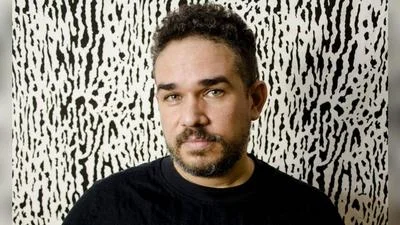Mayor Michael Hancock | Michael Hancock Official Website
Mayor Michael Hancock | Michael Hancock Official Website
Denver Hits Major Milestone in Bike Infrastructure, surpasses goal to build 125 miles of new bike lanes in 5-year period
More than half of all Denverites now live within a quarter mile of a high comfort bikeway
DENVER – On May 24, Denver celebrated installing 137 miles of new bike lanes in five years, surpassing the goal of 125 miles set by Mayor Hancock in July of 2018 to connect riders of all abilities to the places they want to go.
“In the last five years, we’ve transformed our streets with new neighborhood bikeways, protected bike lanes and traffic calming measures to slow cars and create a safer citywide transportation network for all,” said Denver Mayor Michael B. Hancock. “We have set a strong foundation to ensure the future of mobility in Denver includes the ability to travel more easily by bike and offers safe places to scooter as well.”
In January 2020, Denver’s Department of Transportation and Infrastructure (DOTI) announced it would accelerate implementation of the city’s bike network using a three-pronged approach:
1. Coordinating the installation of new bikeways with street paving operations.
2. Building high comfort bike facilities that serve as backbones for large-area bike network buildouts funded through the Elevate Denver Bond Program.
3. Building networks of bikeways in the city’s core where population densities are higher to significantly increase the number of Denver households within ¼ mile of a high comfort bikeway (a primary goal of the Denver Moves: Bikes Plan).
Of the 137 new bikeways installed, the majority are considered high comfort facilities and in many cases are paired with other safety treatments that include pedestrian refuge islands, updated crosswalks, traffic circles, curb extensions, and diverters, especially on the city’s neighborhood bikeways.
More specifically:
24 miles are bike lanes45 miles are buffered bike lanes23 miles are protected bike lanes34 miles of neighborhood bikeways11 miles are shared use paths and trails
“Our bikeways make it easier and safer for people to ride at a speed that is comfortable for them while minimizing conflict with people in cars,” said Adam Phipps, DOTI Executive Director. “As we continue to build out our bike and multimodal network, we are creating a more sustainable alternative to driving that’s safer, enjoyable and better for our health and our environment.”
May 24th announcement was made on our latest route currently underway, which runs along West 46th Avenue in Denver from Tennyson Street to Inca Street and includes a mix of bike lanes and buffered bike lanes. The route is part of Denver’s newly-created Northwest Community Transportation Network.
In fall 2022, DOTI began installing 44 miles of new bikeways across 27 corridors in Central, South Central, and Northwest Denver, as planned with communities in those areas. These new bikeways provide traffic calming, wayfinding, and high-comfort connections for people biking, as well as other positive benefits for people walking, scootering, and taking transit. In 2023 and beyond, DOTI will continue building bikeway projects planned and designed through its Community Transportation Network efforts, as well as completing projects identified through the Denver Elevate Bond Program and prioritized through the Denver Moves Everyone (DME) 2050 Plan. DOTI will also be working with the community to plan and build out bike networks in Globeville and Elyria-Swansea to ensure areas of most need are receiving improvements.
Denver now has more than 433 total miles of bikeways, including on-street and off-street facilities (such as trails). More than 300 miles of bikeways are on-street, demonstrating a citywide commitment to prioritizing streets for people and providing safer connections to eliminate fatal and serious injury crashes.
Please visit www.denvergov.org/Bicycle to learn more about Denver’s bike program and receive updates on upcoming projects.
Original source can be found here




 Alerts Sign-up
Alerts Sign-up